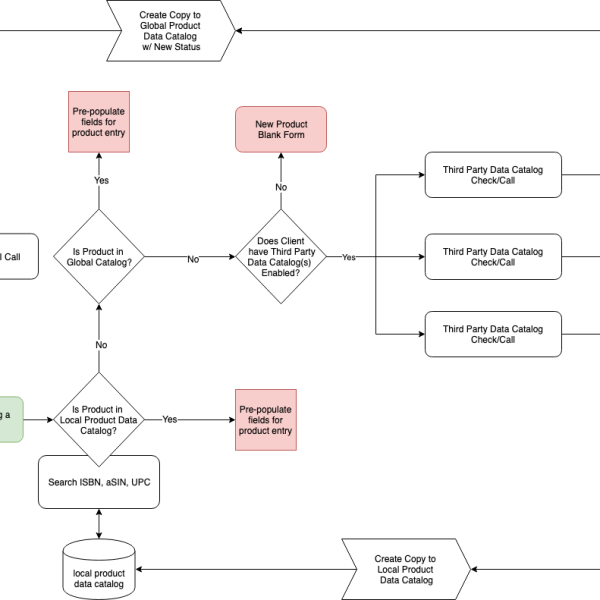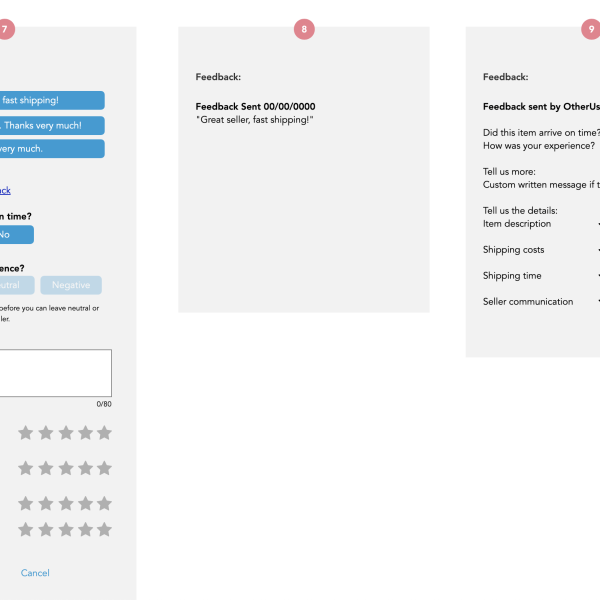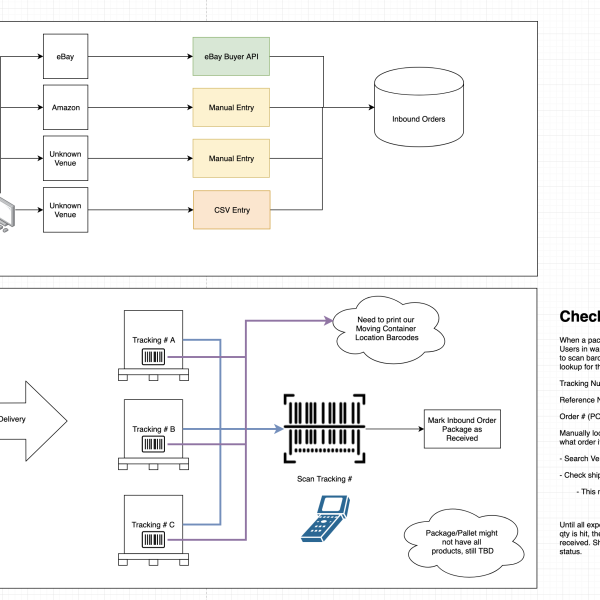InventoryStation SaaS
A Multi-Channel SaaS Solution for eBay Power Users
During my tenure as the architect and product owner at Knight Interactive, I spearheaded the development of InventoryStation, a groundbreaking SaaS product designed to optimize the eCommerce used resale market. This venture, initiated in collaboration with GameSwift, aimed to address and rectify the limitations of an existing, bug-ridden legacy software by creating a scalable, robust solution that catered to the intricate demands of the resale industry. InventoryStation emerged as a comprehensive tool, enhancing operational workflows and offering resale vendors a competitive edge in inventory management.
The journey of InventoryStation from concept to implementation was marked by strategic market analysis, stakeholder engagement, and the navigation of technical complexities. A personal milestone paralleled this professional journey, as I utilized the software to design a unique wedding ring, thereby testing and proving the software’s efficacy.
The development and launch of InventoryStation represent a significant achievement in my understanding of SaaS product innovation and addressing the unique challenges of the eCommerce resale market. Through strategic planning, stakeholder engagement, and the resolution of technical and operational challenges, InventoryStation has started to pick up new growth. These insights serve as a testament to the importance of strategic vision, user-centered design, and adaptive leadership in navigating the complexities of software development in the dynamic eCommerce landscape.
Strategic Insights and Leadership Lessons
Emphasizing User Experience in Software Development: The engagement of a UX/UI contractor highlighted the importance of prioritizing user experience in software design. This strategic decision facilitated the creation of a streamlined interface that significantly reduced "Time on Task" for warehouse personnel, enhancing overall operational efficiency.
Lesson Learned: Leveraging external expertise can bring invaluable insights and specialized skills to a project, particularly in areas requiring niche knowledge, thereby enhancing product quality and user satisfaction.
Navigating Technical Integration with Precision: Integrating label printers and managing barcode scanning technologies presented unique challenges, emphasizing the need for meticulous planning and innovative problem-solving in integrating physical technologies with web-based software.
Lesson Learned: Successful integration of hardware and software requires a deep understanding of both domains, as well as a creative approach to overcome documentation gaps and proprietary language barriers.
Balancing Stakeholder Interests with Project Vision: The project’s evolution underscored the complexity of aligning stakeholder expectations with the project's strategic direction. A key stakeholder's push for a version akin to the original software necessitated a delicate balance between innovation and existing preferences, guiding the project towards a solution that met immediate needs while laying the groundwork for future enhancements.
Lesson Learned: Effective stakeholder management involves clear communication, setting realistic expectations, and involving key players in the decision-making process to ensure project alignment with business goals and user needs.
Adapting to Remote Team Management: The shift to a fully remote work environment required adapting management styles to maintain productivity and cohesion among team members dispersed geographically. This transition highlighted the critical role of clear communication, trust, and community in remote team dynamics.
Lesson Learned: Managing a remote team successfully demands proactive communication strategies, the establishment of clear goals, and the fostering of a collaborative culture that transcends physical boundaries.
Ensuring Software Scalability and Flexibility: The development approach adopted for InventoryStation addressed the pitfalls of client-specific customizations by advocating for a unified codebase that could support multiple instances. This strategy not only streamlined management but also allowed for feature inclusivity across clients, enhancing the software’s appeal and utility.
Lesson Learned: A flexible and scalable software architecture is crucial for long-term sustainability and growth, enabling the seamless introduction of new features and ensuring consistent, efficient platform performance across diverse client needs.

Initial Sitemap
Engaging a UX Designer
One of the major focuses of a Key Stakeholder was "Time On Task" for his warehouse personnel. As a group we decided it made sense to engage a UX/UI contractor to help define a streamlined user interface.
Though Knight Interactive was in the market for a UX/UI designer to hire in-house, hiring a UX/UI contractor was a smart decision for several reasons. One of the main benefits is that it allows you to bring in specialized expertise on a project-by-project basis, rather than committing to a full-time hire. This was particularly useful since we only needed UX/UI support on an intermittent basis.
In addition, UX/UI contractors can bring a fresh perspective and outside expertise to your project. They can bring new ideas and approaches to the table, helping to improve the overall user experience of your software platform.
I was responsible for vetting all the candidates that applied to the job posting I created. Once I narrowed down the candidate list to just a few, they were asked to interview with the key stakeholders of the project. We eventually settled on a fantastic specialist named Rachel Adkins. From day one we knew she meant business as we worked through all the uses cases in our technical specification document and her attention to detail while creating design wireframes left little to be desired.
R2 Certification
One of the key requirements for this project was the implementation of features to support R2 certification. Our client, a major player in the electronic resale industry, needed to meet this requirement in order to fulfill a vendor requirement. To meet this need, we developed a system to track and record the recycling and disposal of all products entering their warehouse, with a focus on ensuring that the process was easily auditable. This was an important consideration for the customer as they sought to demonstrate their commitment to responsible waste management.
R2 certification is a standard that ensures that electronic waste is recycled responsibly. It requires that recyclers follow specific guidelines to properly handle and dispose of electronic waste, including data security, environmental health and safety, and employee training. It ensures that electronic waste is recycled in a way that protects the environment and human health, and that sensitive data is properly erased during the recycling process.





